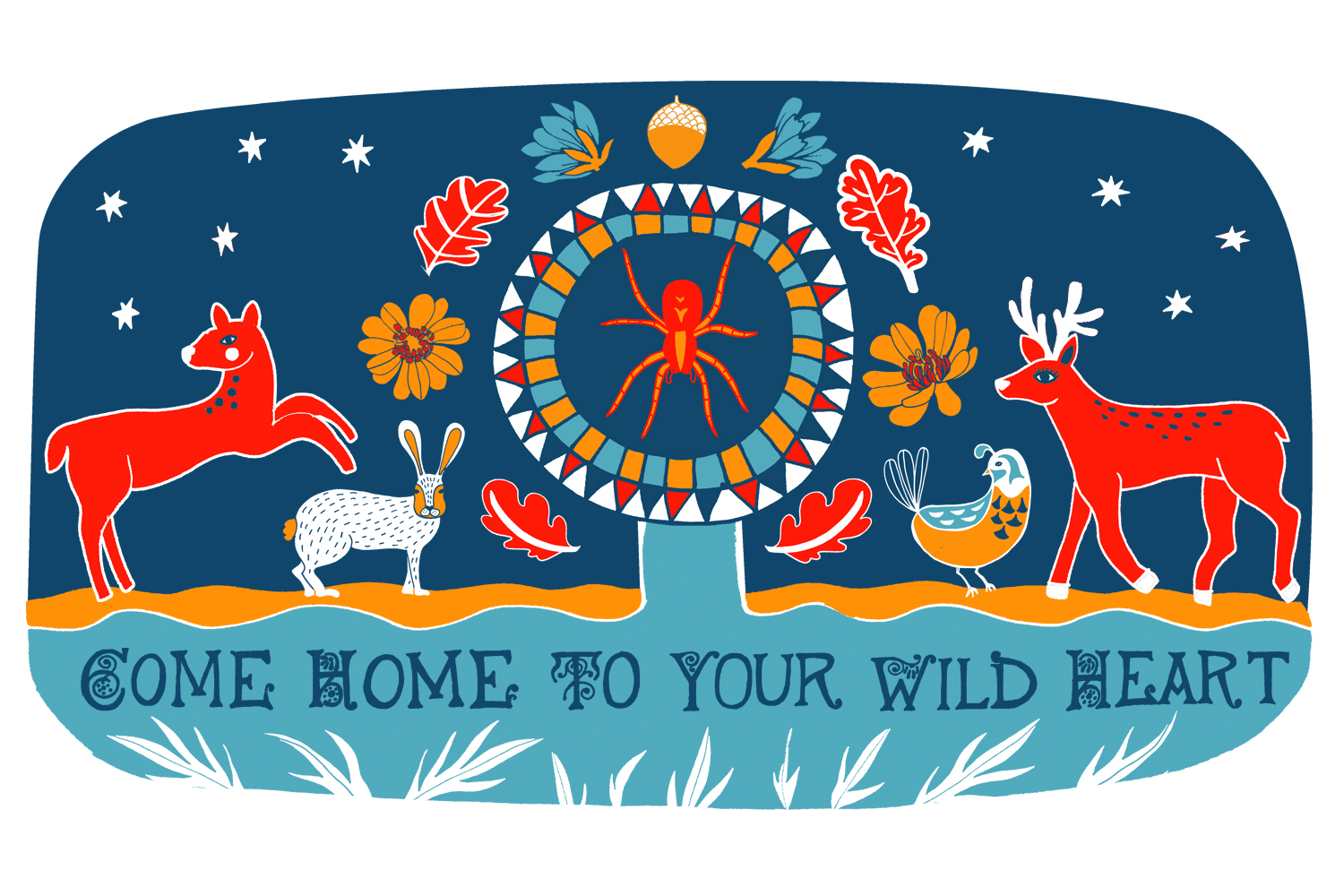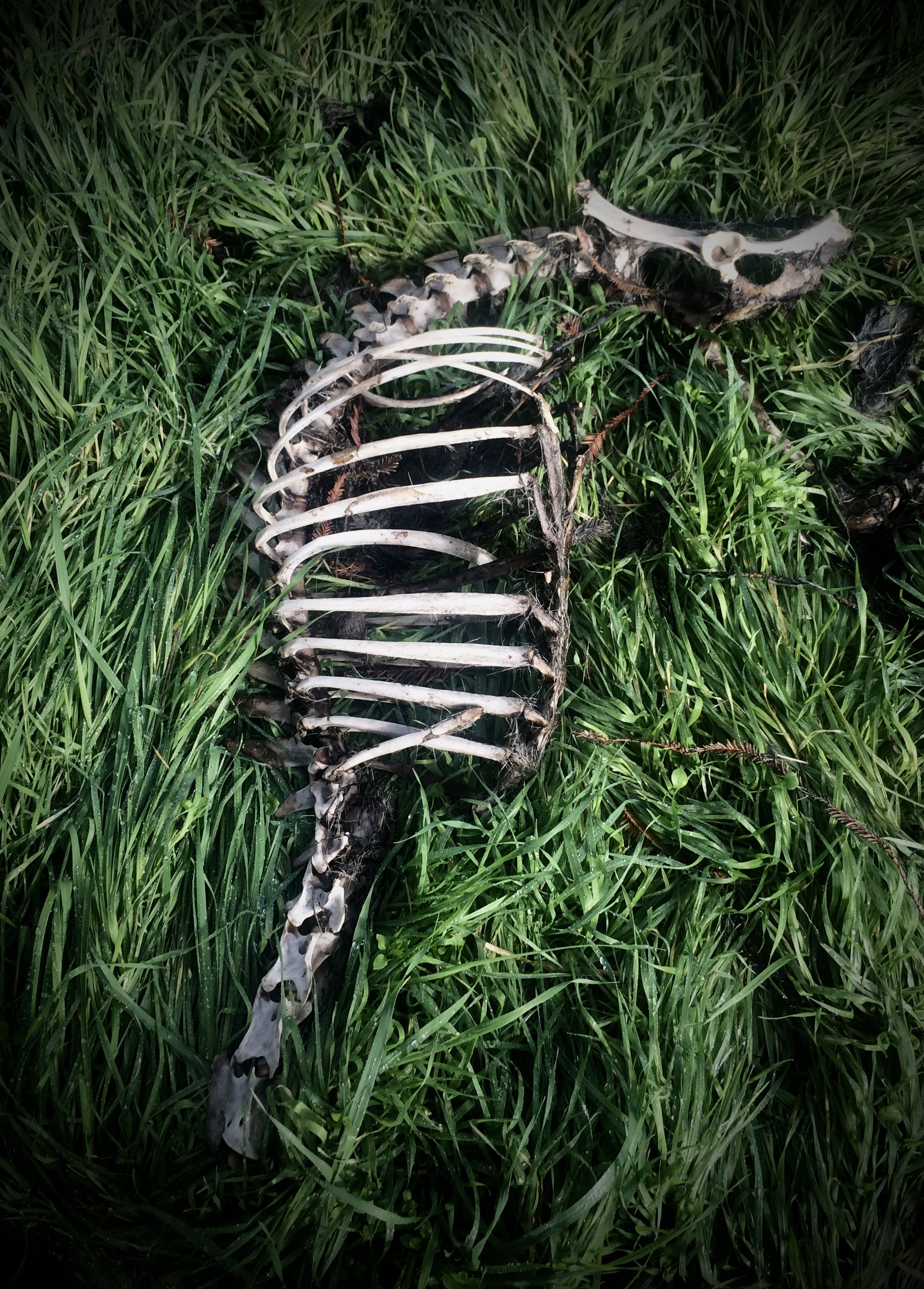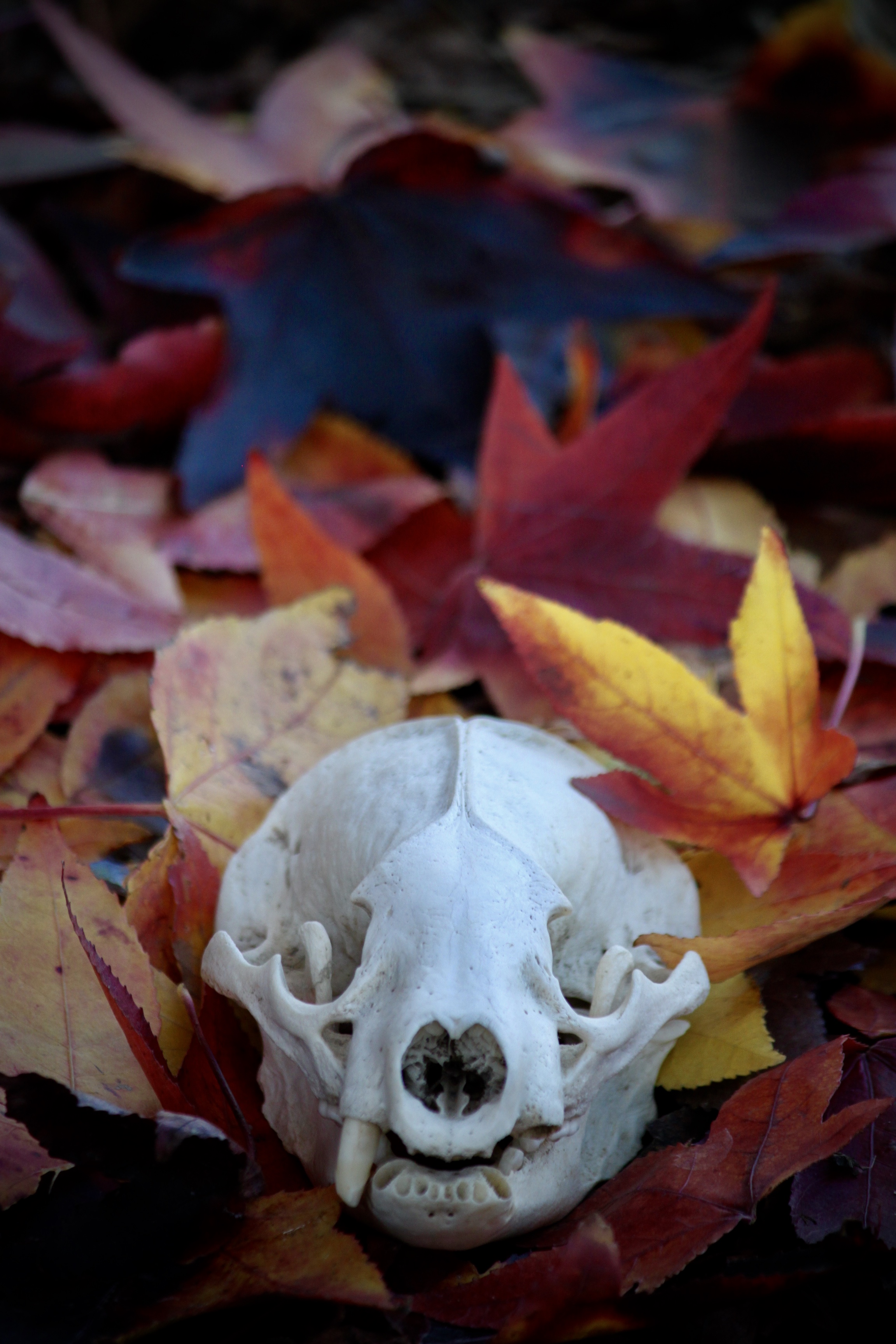We Are Here To Feed Each Other
Someday I am going to die. Someday so are you. Someday both you and I will feed - even more than we do now, through our sloughed skin, through our excretions, through other means - those communities who now feed us. And right now, amidst all this beauty, all this life, all these others - sedge, willow, dragonfly, redwood, spider, soil, water, sky wind, clouds - it seems not only ungenerous, but ungrateful to begrudge the present and future gift of my own life to these others without whom neither I nor this place would be who we are, without home neither I nor this place would even be - Derrick Jensen from The Myth of Human Supremacy (2016, p. 15)
Burned manzanita on Bald Mountain at Sugarloaf Ridge State Park
My birthday present to myself last year was a four day workshop on Death Midwifery and Home Funerals. I had contemplated the program for a few years, but was compelled to make the leap after a summer of disturbed insomnia. Waking each night at 2am, my mortality would be hovering inches from my face. “Ah good” it would say. “Now that you’re up, let’s chat.”.
I am not a stranger to death. Every year, from October 31- November 2nd, my family celebrates mortality, by honoring ancestors (arranging photos on an altar, cooking them special foods, sitting with them by candlelight), with my birthday falling right in the middle, on November 1st. I have been privy to the passing of many animals, as well as family members, and my home is decorated with skulls I have rescued from roadkill. When my daughter was 3, her own realization of death surfaced, and I sat and rocked her by a river and taught her the song “Breaths”by Sweet Honey and the Rock,
Listen more often to things than to beings
Tis' the ancestors' breath
When the fire's voice is heard
Tis' the ancestor's breath
In the voice of the waters
Those who have died have never, never left
The dead are not under the earth
They are in the rustling trees
They are in the groaning woods
They are in the crying grass
They are in the moaning rocks
The dead are not under the earth
Given my willingness to cultivate a healthy relationship with the river’s end, the dread that gripped me in the middle of the night left me addled. Perhaps it had to do with the recent death of my father, or that, at 45, the second half of life suddenly seemed quite short. My days began to fill with anxiety, and I even started to wonder if I was having some kind of premonition…was I about to buy the farm? This went on for two months until one day I had an epiphany: Death was looking for me. Not because I was next on the list, but because I had kept death at a distance with a ten foot conceptual pole. I needed to confront my personal mortality, and the place to begin was my fear.
The truth was that I was experiencing Thanatophobia, or death anxiety. As psychiatrist Irvin Yalom (2008) said, I was one “whose family and culture have failed to knit the proper protective clothing for them to withstand the icy chill of mortality.” (p. 117). Having rejected the religion of my childhood, understanding that death anxiety is the mother of all religions (p. 5), I had adopted the approach of Carl Sagan (1997) in an attempt to face Death honestly,
“Despite the ancient and worldwide cultural traditions that assert an afterlife, I know of nothing to suggest that it is more than wishful thinking. The world is so exquisite, with so much love and moral depth, that there is no reason to deceive ourselves with pretty stories for which there’s little good evidence. Far better, it seems to me, in our vulnerability, is to look Death in the eye and to be grateful every day for the brief but magnificent opportunity that life provides. (p. 215)”
I had hoped that a staring contest with Death would instill bravery and familiarity, like exposure therapy. Turns out, Death doesn’t blink and I had more need for pretty stories than I let on.
The one pretty story I feel certain of, actually, has a lot of evidence. I witness it daily, just a few steps outside my door in rural Sonoma County. We rent a tiny home on a horse ranch, with a garden bigger than our house. To nourish this garden, we add a mixture of horse manure and composted food scraps and waste from the chicken coop. Two large compost piles contained by recycled wood pallets is where the magic happens. Insects, microbes (and the heat they generate) break down the organic matter into gorgeously rich soil - soil that grows a majority of food for my family in the warmer months, and a year round supply of flowers, medicinal herbs and native plants. I have taken the corpses of roadkill and buried them in the center of these piles. Nine months later I remove beautiful whole skeletons, picked clean of mortal remains.
The whole of the natural world operates in this way of giving and taking, of death and regeneration. With one exception - humans. In our fear and revulsion of decay and death we have sanitized our experience to the point of toxicity. Yet this is a fairly recent development.
Each year we drain corpses of bodily fluids and replace them with enough formaldehyde-based embalming fluid to collectively fill 1.25 olympic swimming pools. Before formaldehyde, it was arsenic, which became commonplace during the Civil War as a way to keep bodies fresh enough to transport them home to their families. Tests done on soil and water near cemeteries from the 1800s are contaminated with unsafe levels of arsenic. Formaldehyde has a shorter half life, but it is considered a hazardous chemical by the FDA and is carcinogenic. As Caitlin Doughty, director of Undertaking LA and champion for The Good Death explains in her TEDx Talk:
“The funeral industry promotes the idea of human exceptionalism. The funeral industry will protect your dead body by offering to sell your family a casket made of hardwood or metal, with a rubber sealant. At the cemetery on the day of burial, that casket will be lowered into a large concrete or metal vault. We’re wasting all of these resources - concrete, metal, hardwoods, hiding them in vast underground fortresses. When you choose burial at the cemetery, your dead body is not coming anywhere near the dirt that surrounds it. Food for worms, you are not. Next the industry will sanitize your body through embalming. The chemical preservation of the dead. Human decomposition is perfectly safe. The bacteria that causes disease is not the same as the bacteria that causes decomposition. Embalming is a cheat code pretending that death and decay are not a natural end for all organic life on this planet.”
Since the industrial revolution, cremation has been touted as the preferred modern solution to death. While it is far cheaper than conventional burial, its contribution to climate change, as well as the volatilized mercury from amalgam fillings entering the atmosphere , makes it less environmentally friendly than it would seem. The bone fragments that are returned to the family are also completely sterile, so the body’s contribution back to the Earth is negated. Even if you place Gramp’s ashes in the garden, he still won’t be coming up as carrots and little sweet peas.
One of our many modern agricultural ills is soil depletion and pollution from fertilizer run off. We eat resources in the form of food but we don’t recycle it back to the fields. Obviously it would be outrageous to our western sensibilities to suggest that we begin to return human waste, both excrement and bodily decomposition, back to the land. Yet Homo Sapiens, as one of the most populous species, have a responsibility to return what we take. From the way we use precious water to flush away our manure, to our production of materials that are not biodegradable and often toxic, to the sequestering away of the body after death, we humans take our seats at the banquet hall, not understanding that our job is to eventually be the main course. You fed me. Now I feed you.
The Death Midwifery workshop was rich and challenging. Should you die (and believe me, you will) I feel confident in helping you navigate all aspects. From writing an advance directive, to planning your home funeral and comforting you when you are nearing the threshold, to assisting your family in washing, dressing and preserving your corpse and filling out your death certificate, I am prepared to walk those badlands. I entered the training imagining I had found my people and my new calling. However, I exited on my last day possibly more terrified than when I had gone in. Four days of sitting with the inevitable had unfortunately not included any time for personal processing or honoring the grief that was stirred up.
I remained at a stalemate with death, the nightly “chats” continued and I wondered if I had just paid a lot of money to torture myself. It was during one of my daily walks that I finally arrived at the missing connection on my own.
I watched oak leaves in the slanted autumn light, spiraling in their final dance, falling from branch to ground. I heard the golden crowned sparrows singing Summer is gone and the orange shafted flickers calling to each other across the pasture. The grass had dried to brown thatch on the fields and as I anticipated the return of the rains, I felt my love for this life and this Earth. I brought this love to my shivering fear. Then I unexpectedly burst into tears.
I’m not afraid of dying. I’m afraid of being denied my reinstatement. Dying indoors, being embalmed, trapped in a coffin, contained in a cemetery - this is the true death. I want to die outside, with breeze on my skin, the trees above and the birds as my witness. I want my mortal coil to unwind as I rot, to be carried away in the bellies of other beings, to be scattered, molecule by molecule, across the countryside. Returning to, and nourishing, the cycle of life…it’s the one pretty story I need.
I began to research other options…just how easy or difficult is it to be allowed to decompose naturally? Fortunately, it’s never been a better time to die and request an alternative arrangement. Home funerals (or, how we took care of our own except for the last 150 yrs) are rising in popularity, as are green burial options. At its most basic, green burial is placing an un-embalmed corpse in a wicker casket or cardboard box and burying it in an unlined, shallow grave, to become worm food. In some places, like Crestone, Colorado, you can have a home funeral and then be transported by your community to an outdoor pyre, with your grandchildren laying logs on the fire. Or perhaps you’d be interested in a warm bath? Called Aquamation, this is water cremation, where a mix of 95% water and 5% potassium hydroxide turn your remains into liquid fertilizer (pulverized bone is still returned to your family). There is conservation burial, where you can be returned to the earth in a natural preserve, aiding ecological restoration and wildlife habitat. My personal favorite is the brain child of Katrina Spade, CEO and founder of Recompose (formerly The Urban Death Project). She has developed a system to gently compost human corpses…the resulting soil is returned to the family, city parks, gardens and conservation areas.
Was that an icy wind you just felt up your back? Is the concept of disincarnation giving you the willies? Perhaps death is looking for you too. If there’s one solid take-away I want to leave you with, it’s the desperate need our culture has to change its relationship to living and dying. What if we lived our lives like we were going to die at the end of them? What if we held that awareness close, and let ourselves feel the emotional diversity that stirs within? The way to value life, the way to feel compassion for others, the way to love anything with greatest depth is to be aware that these experiences are destined to be lost. (Yalom, p. 147).
I still believe in the words of Carl Sagan. I also think that our death denial and lack of emotional intelligence about grief is causing us to take the earth into the grave with us. To quote Caitlin Doughty again,
“Will changing the way we bury our dead solve climate change? No. But it will make bold moves as how we see ourselves as citizens of this planet. If we can die in a way that is more humble and self aware, I believe that we stand a chance.”
FOR FURTHER CONTEMPLATION
Caitlin Doughty (undertakingla.com) is a wealth of resources, including two bestselling books and a YouTube channel.
Katrina Spade and her work can be found at recompose.life
Staring at the Sun by Irvin Yalom is a most excellent resource on the topic of death anxiety.
References:
Jensen, Derrick. (20116). The Myth of Human Supremacy. Seven Stories Press. New York.
TEDMED. A burial practice that nourishes the planet. www.ted.com. Presentation by Caitlin Doughty, 2016. TED. https://www.ted.com/talks/caitlin_doughty _a_burial_ practice_ that_nourishes_the_planet
Sagan, Carl. (1997). Billions and Billions: Thoughts on life and death at the brink of the millennium. Random House. New York.
Yalom, Irvin D. (2008) Staring at the Sun: Overcoming the terror of death. Jossey Bass. San Francisco




